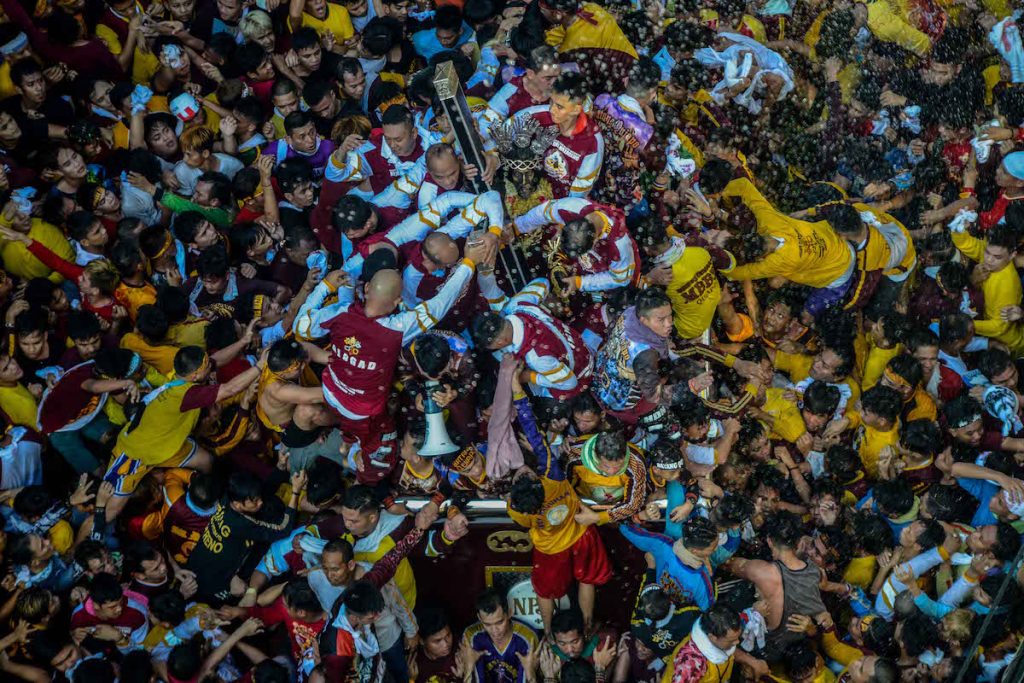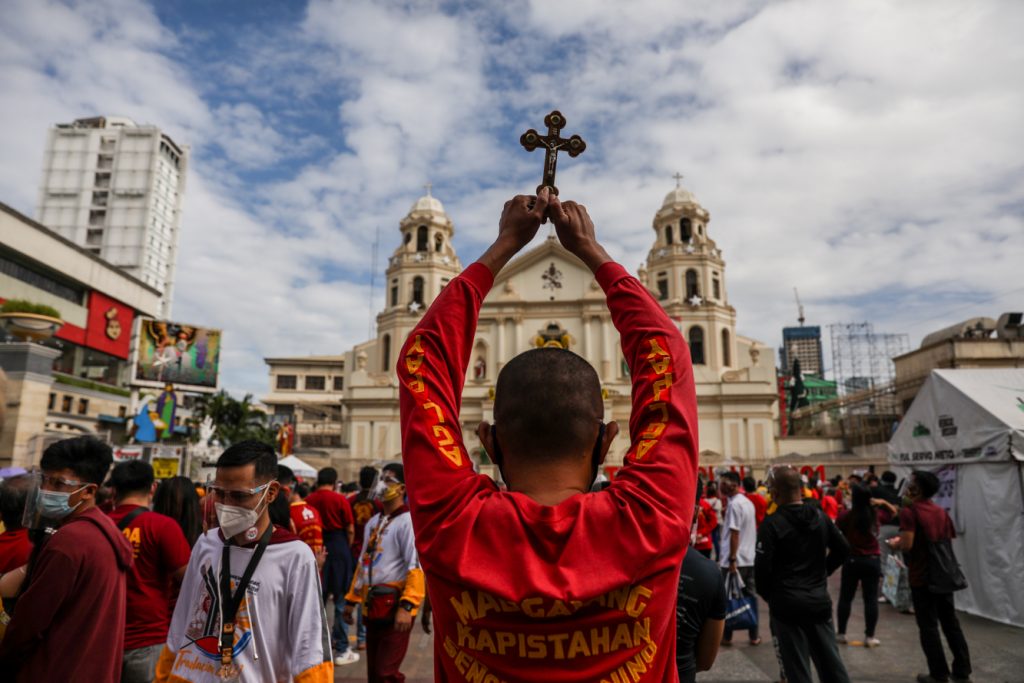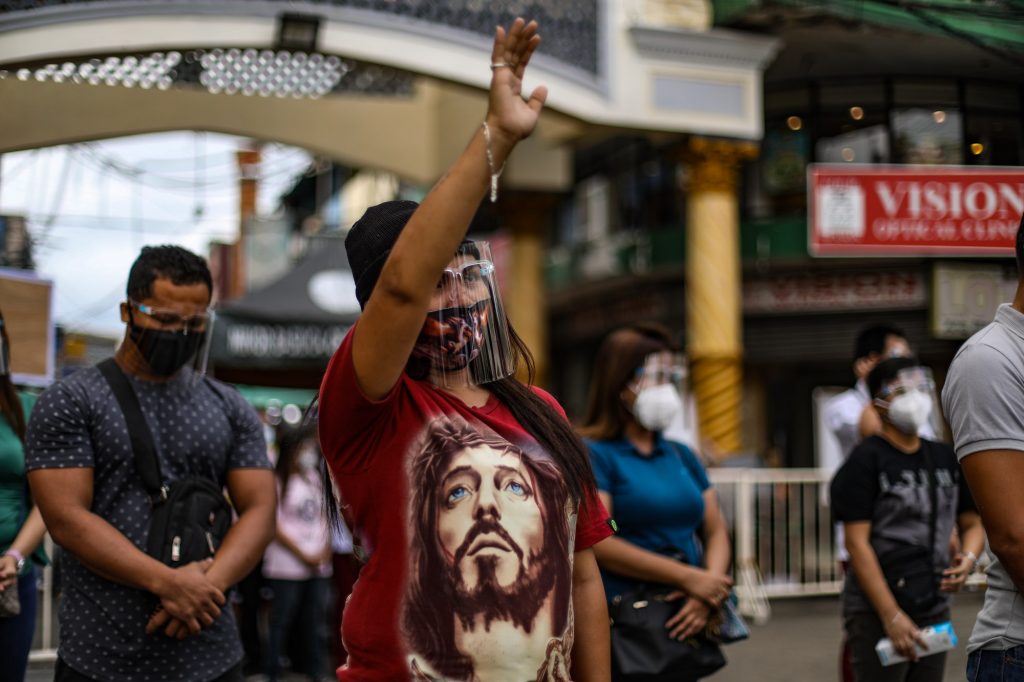When I was a kid, I used to join the annual procession of the Black Nazarene with my mother every January. There were times that I would see and meet my mom’s brother, my uncle, who is a devotee, a “mamamasan,” someone who vows to carry the image of the suffering Jesus.
The procession is always a sight to behold, a multi-sensory spectacle that showcase one of the most popular devotions in the Philippines, aside from the devotion to the Sto. Nino or the Child Jesus and to the Blessed Virgin Mary.
The Black Nazarene devotion, however, is different.
I could vividly remember how countless people, mostly men, jostle among themselves for hours for the honor of reaching the image of the Nazarene perched on the “andas,” or float that is being pulled by thousands of barefooted men, of getting back the small white towels they throw at the image, and of reaching for the ropes that pull the carriage along the streets of Manila’s Quiapo district.
It was only in recent years that women were allowed to be a “mamamasan” and to be able to make the fantastic climb up the “andas.”
Between my younger days and now, I’ve been in contact with roughly the same people who are faithful devotees of the Black Nazarene. They are mostly from the working class and peasant migrants from rural areas. They’re factory and construction workers, drivers, and other poor folk from the informal sector. Many are employed as contract workers who do not have regular jobs.
Devotees of the Black Nazarene live precarious lives in the city. The phrase “isang kahig, isang tuka (referring to a chicken that can only eat every time it scratches the ground)” comes to mind. They live day to day.


Media interviews with devotees have always focused on their individual prayers, with journalists highlighting what people pray for, either in supplication or thanksgiving. Media always try to ask the ultimate question, “Why go on this day-long, highly-emotional annual ritual that sometimes result in fatal incidents?”
The devotees answers get lost in rush of the day’s reportage, with celebrities stealing the thunder from the regular, ordinary devotees.
Many, if not most, devotees have always said that they identify with the icon and image of the suffering Christ, because they also suffer.
It could be argued that the devotees’ individual prayers could be collectively expressed in the unresolved social ills affecting most of the devotees: for stable, secure jobs; for promotion at work; for safety for families; and finally, for healing from sickness that in many instances are curable but due to a sick health care system (sick, because it’s privatized) have gone from bad to worse.
In recent years, church leaders have warned against the devotees’ possible descent into idolatry. But the devotees would have none of it. Many of them pass by Quiapo Church every day on the way to school or work or go to the basilica on Fridays to pray. They do their part, so to speak, which is to pray and to work.
And so, on the greatest of the three Black Nazarene processions every year, the devotees go out early on Jan. 9 to raise their prayers individually and join a collective procession. (A “Thanksgiving Procession” of the image is held every Dec. 31 while another one is held on Good Friday.)


Devotees participate in the rites leading to the start of the procession from just before sunrise, and on their shoulders rest the honor and duty of bringing back the icon and the image from a park in Manila to the church in Quiapo.
Come to think of it, the workers actually have work on that day. Without the workers, there would be no “traslacion,” literally “transfer,” of the image, to speak of, no movement.
A handful of fundamentalist Christians would always invite mayhem upon themselves as they go to parts of the procession, accusing devotees of idolatry. But I think they are enabled less by the fervor of the devotees, but on the failure of church leaders to express the devotees’ objectives and prayers.
Often, the religious liturgies, readings and themes arguably go above the heads of the devotees, painfully detached from the realities the devotees face and pray to God to help change — to the point of many asking for miracles on problems that man could themselves solve.
The prayers are obtuse and tangential to the cares of the devotees. Wouldn’t it be great to hear prayers not just broadly for the healing of the sick, but for the treatment of the otherwise curable diseases, and a stop to the “privatization” of health care?
Wouldn’t it be relevant to raise the prayers of workers for job security and of farmers for land reform? Or aside from asking the faithful to clean up the procession route, to lift up to God the prayer of the pope that God’s people be empowered to bring change to structures and institutions at the root of climate change?
Also, wouldn’t it be awesome to raise prayers for the reform in the police force, for the repentance and surrender of “ninja cops” and “death squads?”


I find it odd that the police command in the Philippine capital is making recommendations to change and make “more secure” the over 400-year old ritual, while the police officialdom upholds the policy of defending, promoting, and excusing extrajudicial killings of many a kin of Black Nazarene devotees.
I wish to preempt the wild reactions of Catholic conservatives over this commentary, because it might look like “politicizing” a “purely religious” event.
Our history is replete with lessons how politics and religion made the building and expansion of churches and the promotion of devotions not just possible but enforceable, through “forced labor” and the unity of church and state.
We cannot pretend that those didn’t happen and helped lead us to our present situation.
The Black Nazarene devotion is perhaps one of our most predominantly working-class Catholic devotions. Its devotees’ fervor isn’t just pregnant with issues that beset them as a mass or collective of people. It is a fervor of a people bearing the crushing weight of a disconnected Church and burdensome politics. They could be moving, in an arguable “traslacion,” toward spiritual and political resurrection.
This article was originally published on January 8, 2020, before the onslaught of the global coronavirus pandemic.
Tonyo Cruz is a Filipino blogger, newspaper columnist, and convener of the media and arts alliance Let’s Organize for Democracy and Integrity.
The views and opinions expressed in this article are those of the author and do not necessarily reflect the official editorial position of LiCAS. news.


